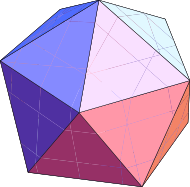Last week I stayed in a hotel where I noticed this sign:
This building contains chemicals, including tobacco smoke, known to the State of California to cause cancer, birth defects, or other reproductive harm.
I saw similar signs elsewhere during my visit to California, though without the tobacco phrase.
The most amusing part of the sign to me was “known to the State of California.” In other words, the jury may still be out elsewhere, but the State of California knows what does and does not cause cancer, birth defects, and other reproductive harm.
Now this sign was not on the front of the hotel. You’d think that if the State of California knew that I faced certain and grievous harm from entering this hotel, they might have required the sign to be prominently displayed at the entrance. Instead, the sign was an afterthought, inconspicuously posted outside a restroom. “By the way, staying here will give you cancer and curse your offspring. Have a nice day.”
As far as the building containing tobacco smoke, you couldn’t prove it by me. I had a non-smoking room. I never saw anyone smoke in the common areas and assumed smoking was not allowed. But perhaps someone had once smoked in the hotel and therefore the public should be warned.
Related post: Smoking


